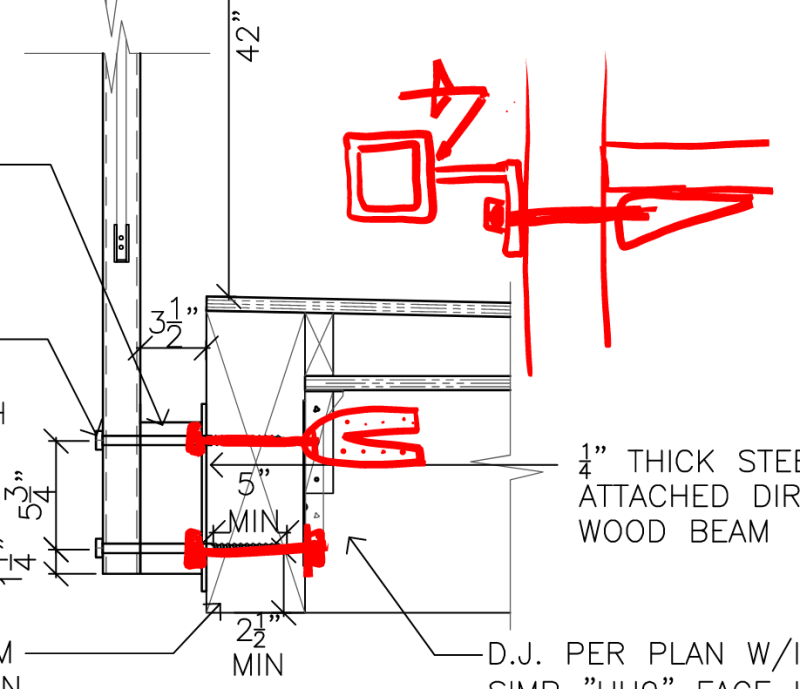Ok, here we go....I am the E.O.R. for this project, which is a new custom 2 story residence(spec house for a developer). Everything has been approved and built. The developer sold the house but the owners wanted to make some changes. The contractor came to me with this guardrail detail for the 2nd floor balconies.
They want to attach the metal posts through the existing stucco. I dont like this idea and I have never come across this before.
What say you?
Thanks
They want to attach the metal posts through the existing stucco. I dont like this idea and I have never come across this before.
What say you?
Thanks

